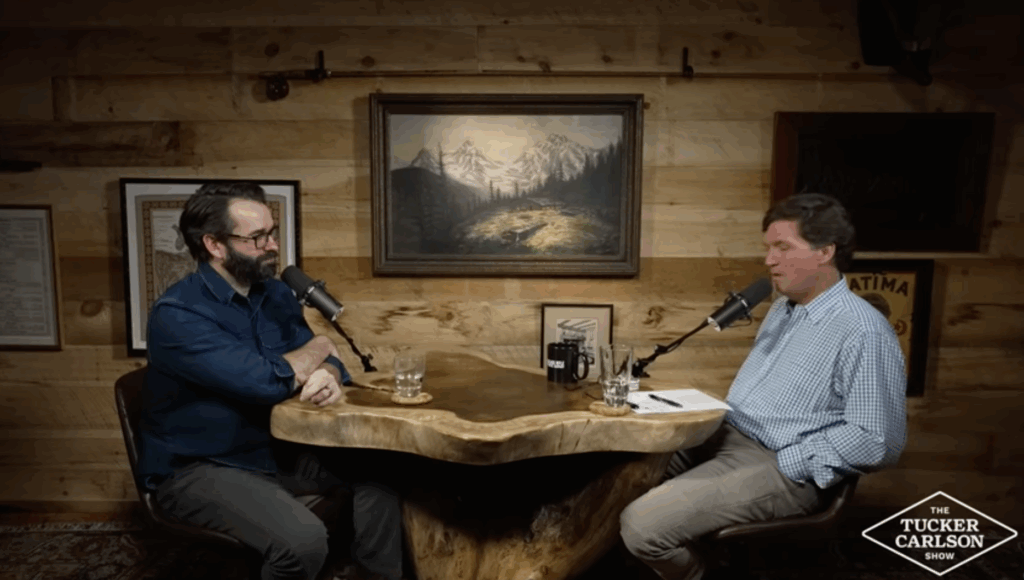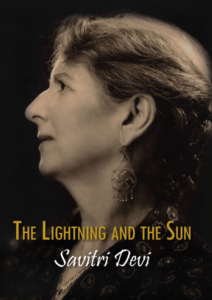Read this site’s featured article.
Schopen quote
If you imagine, in so far as it is approximately possible, the sum total of distress, pain and suffering of every kind which the sun shines upon in its course, you will have to admit it would have been much better if the sun had been able to call up the phenomenon of life as little on the earth as on the moon; and if, here as there, the surface were still in a crystalline condition. [Schopenhauer, Essays and Aphorisms, page 479]
Schopenhauer lived in a time when it wasn’t yet known that, in the distant future, our sun will become a Red Giant: eliminating not only what we call unnecessary suffering, but also the necessary suffering that every creature that wants to live must endure.
As far as the commenters on this site are concerned, only Benjamin, Gaedhal, and I have rationally ventured into this topic. I don’t count Autisticus Spasticus because he suggests getting rid of a hundred per cent of humanity at once.
In contrast, I hope that only the Aryan race, in its Nordic version, will persist in the future and that some super-beautiful Nordids (I recently learned that actor Björn Andrésen from Death in Venice passed away this year) will become followers of the religion of the four words, and inhabit the paradise of girls on rocks painted by the American Maxfield Parrish. Spasticus’ solution isn’t rational because it would allow, say, killer whales to continue tormenting whale calves once Homo sapiens became extinct. Instead, the priest of the sacred words suggests exterminating the killer whale gangs that are doing this.
With its trillions of galaxies, the universe is the mystery of mysteries. What seems to reign everywhere in the Milky Way is precisely this “crystalline condition”, to rephrase Schopenhauer, of the planets of all stars, except our own. Trying to conquer the universe for our religion seems impossible.
But modestly speaking, it is theoretically possible to try to implement the sacred words—Eliminad todo sufrimiento innecesario—at least on this planet. And for that, we need Hitlerites like Ben and me (remember that the first thing the Nazis did when they came to power was to ban vivisection).
Tort
vs. Walsh & Tucker
I can use this segment from Tucker Carlson’s recent interview with Matt Walsh (both Christians) to show what the priest of the sacred words—an anti-Christian admirer of Nazi paganism—has in common with American conservatives. Let’s consider the values that, according to Walsh, those who share them are essentially on his side. According to Walsh, the first value is:
1) Objective truth
Here we seem to be in complete agreement.
But as commenter Gaedhal has said, when it comes to approaching the New Testament from the standpoint of objective truth, conservative Christians are more primitive than liberal Christians. Quite a few of the latter are aware of the historiographical problems that have been raised for centuries about 1st century Christian writings. In contrast, people like Walsh, Tucker, and racialist Christians generally ignore the issue, although it is evident that there is an objective truth regarding the historicity of the New Testament stories. If you ignore it, you are basically ignoring this first value.
If all these conservatives educated themselves honestly on the subject, they would realise that there is not even evidence for the existence of Jesus, and the same could be said about the existence of the Jewish god, whom both Walsh and Tucker worship.
Curiously, both recognise that everything stems from there: from objective truth. But if this pair and the Christians of the racial right don’t even dare to discuss the issue, we can assume that when it comes to Judeo-Christianity, they are not interested in such a thing as objective truth.
The next thing Walsh mentions is:
2) Preserving American identity in particular: the institution of the family (and therefore the institution of marriage), and Western civilisation in general.
Note that not for a second do these two Christians talk about preserving the white race, which is what the priest would mention as the priority. It is from the 14 words that one understands the need for the institution of marriage[1], which only makes sense if both husband and wife are whites. To the conservative question of what we are trying to conserve, my answer would be: the DNA of the Aryans.
It is precisely because of this omission that Walsh and Tucker later criticise multi-culturalism. The religion of this pair doesn’t allow them to criticise the multi-racial society that the US has become. (When an Aryan marries a coloured, for the priest of the sacred words s/he sins against the holy spirit of life.)
_________
[1] Remember that my favourite films are Sense & Sensibility (1995), and Pride & Prejudice (2005).
The Lightning
and the Sun, 13
Early marriages of joyfully consented racial selection, to raise sexual relations […] had one aim and one alone: to breed, out of the best Germans, a nation of supermen in the Nietzschean sense of the word; a nation of ‘heroes like unto the gods,’ to repeat the words of Homer.
And, as I said before, the Führer pursued that aim not just because the Germans were his people, but because his, more-than-political, nay, more-than-human insight pointed them out to him as the only people sufficiently pure-blooded and, at the same time, sufficiently militant to be the saviours of the Aryan race, here and now, in its present-day emergency, and to become the instruments of its regeneration and survival, beyond the stormy end of our Time-cycle.
The well-known National Socialist policy of German expansion towards the East is the logical consequence of Adolf Hitler’s efforts to raise not only the biological quality of his people (through racial selection) but also their birth-rate, while doing all he could to avoid coming in conflict with England i.e., while refusing to claim, for Germany, colonies overseas. It was as clear and consistent as could possibly be: if every healthy and pure-blooded German was to have as many children as he or she could—the more the better—(and that was what the National Socialist State was urging them to do), then surely that yearly increase in population was to live somewhere and somehow. And if emigration overseas was to be discouraged (in order to avoid all economic rivalry with England, in those days in which there still existed a British Empire) then the growing millions had to find another outlet, for Germany was anyhow, and already before Adolf Hitler came to power, too small for the population she had. The new outlet was to be ‘the East’—the rich corn-lands of Ukraine, and further still: Russia’s illimited expanses.
This policy has been misunderstood […]
In order fully to understand both, one has—again—to consider National Socialism from the standpoint of cosmic evolution and to recognise, in it, the great Movement ‘against Time’ […].
[…] in order to overrun the earth with his own brood of poorer and poorer quality. That sinful will, coupled, as time goes on, with positive hatred for the eternal, natural Order, has found its latest main expression in the system of false values […]
[…] to organise the every day more enormous Menschenmaterial for the benefit of the Forces of disintegration. These, i.e., their agents, tend, admittedly to do away with the vast international slum which the world has become, but… only in order to drill the slum-dwellers—ultimately—into factory robots with one ideal: work, work, work; ‘production,’ ever more production, and cheap enjoyment—ever more enjoyment—quantity, and ever more quantity… till more and more millions of bastardised world-citizens have completely killed Nature for ‘man’s’ sake […].
In the eyes of the believers in quality, however (in the eyes of those who deplore that broadening disparity between actual life and its divine pattern, which characterises evolution in Time), any healthy tree, any perfect sample of manifested Life—is worth far more than an ugly,—degenerate human bastard. […]
That is, I repeat—one can never stress the point enough—the deep opposition between National Socialism and Marxism, nay, between National Socialism and all man-centred, equalitarian creeds, of which Marxism is merely the latest in date and the most consistent. It is the opposition between the Golden Age ideal of quality at all levels of existence, and the Dark Age dream of organised human quantity, submerging all life, until it itself finally sinks into chaos and death.
But we are, now, in the Dark Age—and, which is more, near the end of it. This is a fact which nothing can alter. And just as ‘tyranny can only be broken through greater tyranny, and terror through terror’ (Mein Kampf, p. 507), so can quantity only be crushed through quantity.
The truth which Adolf Hitler gave his people, so that they might become and remain the bulwark of Aryandom against the impact of a bastardised world drilled in Marxism (the latest Jewish revolutionary creed ‘in Time’), can be condensed in a few simple sentences: “We Germans are the only possible leaders of Western Aryandom. That is our ‘God-ordained’—Nature-ordained—mission. We are, therefore, valuable—irreplaceable. Therefore we must live; live and thrive; become numerous, at the same time as we breed an élite. Numerous at any cost (in this Age, in fact, pure-blooded quantity is the raw material out of which, here and there, quality emerges; great men are often born in large families.) Therefore, become a pure-blooded quantity; produce as many healthy Aryan babies as possible!  But we are a nation without space. And we need space for the many babies; space in order to live and fulfil our mission. We don’t want to become England’s enemies. The English are, like we, of Nordic blood (or mostly so). People of the same best blood should collaborate in view of the same lofty aim: the rule of the best of their common best blood. It is the original intention of Nature; the spirit of the eternal Order, against which we do not wish to sin. England can be (we hope) converted to this standpoint. But Russia has become the citadel of Marxism—that hated Jewish snare. It is, apart from that, a broad, rich land; can provide plenty of space for us, and all possibilities of our growing into a huge people. Huge, and of exceptional quality, therefore invincible; the lords of this earth along with our Nordic brothers, the English. Therefore: expansion towards the East—Ostpolitik!” […]
But we are a nation without space. And we need space for the many babies; space in order to live and fulfil our mission. We don’t want to become England’s enemies. The English are, like we, of Nordic blood (or mostly so). People of the same best blood should collaborate in view of the same lofty aim: the rule of the best of their common best blood. It is the original intention of Nature; the spirit of the eternal Order, against which we do not wish to sin. England can be (we hope) converted to this standpoint. But Russia has become the citadel of Marxism—that hated Jewish snare. It is, apart from that, a broad, rich land; can provide plenty of space for us, and all possibilities of our growing into a huge people. Huge, and of exceptional quality, therefore invincible; the lords of this earth along with our Nordic brothers, the English. Therefore: expansion towards the East—Ostpolitik!” […]
[…] if only England had not betrayed her own blood and deliberately started the Second World War.
The fact that all Adolf Hitler’s efforts to avoid the war—or to end it speedily and victoriously, at least honourably—remained fruitless, proves by no means his inefficiency as a statesman or as a strategist. It only proves that the forces of disintegration—the coalesced forces of our Dark Age, embodied in all-powerful international Jewry—were, in spite of his insight, in spite of his genius, too strong for him; that it needed a still harder ‘Man against Time’ than he, in order to break them; in other words, that he is not the last Man ‘against Time.’
Emsdetten in Westfalen,
Germany, 4th May, 1955.
______ 卐 ______
The Lightning & the Sun by Savitri Devi (Counter-Currents Publishing, 2014, unabridged edition) can be ordered here.
pregnant
“This account is managed by my husband and myself,” says a young Canadian woman on her X account.
I love seeing the photos she uploads because, since I follow several National Socialist males on X, it’s very refreshing to alternate Yang with yin. Healthy women come from Venus and healthy men come from Mars.
If Western women today were like this girl, many incels would already be married…!
Celsus
 It is always good to reread the classics, especially now that we have realised that American white nationalism is irredeemable because of its Christianity and neochristianity (cf. the previous posts).
It is always good to reread the classics, especially now that we have realised that American white nationalism is irredeemable because of its Christianity and neochristianity (cf. the previous posts).
Today, for example, I was rereading some passages from The True Doctrine, a book written in the second century c.e. by Celsus, who undertook the defence of the values of Greco-Roman culture against the emerging Judeo-Christianity. Unfortunately, Constantine (312-337), Theodosius II (408-450) and Valentinian III (425-455) ordered the destruction of all anti-Christian works, and only fragments have been rescued from the quotations of the apologists and so-called Church Fathers; fragments which have come down to us.
Here are a couple of quotes from The True Doctrine that are incredibly relevant today:
Isn’t the idea of sending the Son of God to the Jews laughable? Why only to the Jews? Why to that rude, miserable, semi-dissolved nation, while other peoples were more worthy of God’s attention…?
And a few pages later:
How is it that the god of the Jews commanded them, through Moses, to seek riches and power, to multiply until they filled the earth, to massacre their enemies without even sparing the children and to exterminate the entire race…?
Celsus’ work is a staunch defence of the Aryan religion of the Mediterranean in contrast to the Semitic religion at a time when the peoples of the Roman Empire were already engaging in miscegenation.
Gross misnomer
Considering that I discovered white nationalism when I was already half a century old, and that before I used to read, think and write about the psychological damage my parents caused to their first three children (a taboo subject—besides me, what other autobiographer does the visitor to this site know?), from time to time I obviously make psychological forays into the subject of The West’s Darkest Hour.
Over the last few days, I have been reviewing my old diaries and confirmed something I already knew.
What breaks the spirit is precisely what Thomas said yesterday in the comments section of this site: the feminised pettiness of virtually all contemporary racialists (in addition, of course, to normie males).
The very recent conversation between Richard Spencer and Nick Fuentes, the thread where Thomas commented, exemplifies this. But we could say the same about the rest of the American white nationalism forums (I’m not counting Europe because if you dare to speak there, they put you in jail).
Privately, I told Thomas that white nationalists were responsible for my horrible depression and anxiety that eat away at my soul after I lost my home this year.
Let me explain.
A few years ago, a young white man contacted me because he was desperate for fascist action in the real world. I told him that it wasn’t possible at the moment (look at what the American government did to the protesters in Charlottesville), and that he should prepare for the collapse by watching Chris Martenson’s YouTube videos on energy devolution.
But that wasn’t what this young Aryan, with all the hormones of his youth, wanted. He wanted action in the real world!
I would like to give him a better answer belatedly.
Europeans like Thomas and I are waiting for the dollar to collapse so we can buy a house in Mexico (the European Thought Police can’t molest us here) and form a kind of ecclesia for the priests of the sacred words (“We also need temples, enclosures for re-connection, as I call them”—Manu).
It’s true that the important thing is to reproduce (women), but until we take power the feminist, ethno-suicidal laws will be against forming healthy families.
 The idea, so that celibate priests don’t get depressed while waiting for the revolution, is to have rabid podcasts where we can vent all our repressed hatred—something far more virulent and Nazi than the podcasts of Fuentes and company, as the goal would be to galvanise Aryan men to behave like the heroes of Pierce’s novel!
The idea, so that celibate priests don’t get depressed while waiting for the revolution, is to have rabid podcasts where we can vent all our repressed hatred—something far more virulent and Nazi than the podcasts of Fuentes and company, as the goal would be to galvanise Aryan men to behave like the heroes of Pierce’s novel!
Everything else is utterly depressing, crushing to our spirit! Everything else, as I replied to Thomas yesterday, is behaving like the refugee ladies during the Battle of Blackwater!
White nationalists aren’t real men. We are. And if we don’t fight, it’s because there aren’t enough revolutionaries yet. There is not even talk of a future revolution in the forums of the American racial right. If I remember correctly, when Greg Johnson published some articles promoting Harold Covington’s revolutionary novels, Johnson’s then sponsor at TOQ Online (was it Sam Dickson?) freaked out. And that was just Covington’s fiction!
It needs to be repeated ad nauseam: White nationalism is a gross misnomer because they are really de facto conservatives, not the warriors and heroes who truly want to form a new nation so that white families, like the one above, can flourish once again.
Rick & Nick
Four days ago, Richard Spencer interviewed Nick Fuentes again. In sharp contrast to my post this morning, after minute 24 Nick says he lives in a racially diverse city and prefers to live there rather than in a small town populated exclusively by white people—because it would be boring, Rick adds!
Around minute 27 Rick mentions WW2 without saying a word about the Hellstorm Holocaust, or that the bad guys won the war. But he is right at the 30-minute mark that in the previous century there was a window for fascism or communism to escape the System, but now everyone is a slave to capitalism and material comfort.
When they talk about Russia around the 50-minute mark, this pair doesn’t seem to distinguish between the American state (which is in fact anti-white) and the white American nation, which is dwindling every day. That doesn’t mean I’m a Russophile in the last, just that they don’t express themselves like 14-word priests.
Half a minute before the hour, Nick seems to like the universalist “compassion”—he used this word—of today’s woke Europeans (note the difference with us, who propose exterminationist hatred). Nick then goes on to say that he likes the European Union, omitting that it is an exterminationist entity, yes: but of the white man!
More than half an hour later, when they talk about Christian Nationalism, they fail to note that the racial factor should be our #1 priority (Christian Nationalism is not National Socialism with its Nuremberg laws, mass deportations, concentration camps, etc.).
When it was time for wrap-up questions, the first person to ask Nick a question noted that the Catholic Church is browning. Nick acknowledged this harsh reality but failed to suggest any cure, even saying that he liked both the current Pope and Pope Francis.
Rick then spoke about Greco-Roman religion, but he doesn’t seem to have read William Pierce’s history of the white race, Who We Are. Both admire the Roman Empire but are completely ignorant of how the empire’s miscegenation caused Rome to decline and fall (see e.g., this paper of a Swedish scholar).
At 1:50, it is clear that Nick follows Christian ethics. He is asked about the outcome of the Aryan dilemma in the future and responds that ethnic cleansing will not be practical in the US (i.e., expelling them to “Aztlán” as in Harold Covington’s futuristic novels) and Rick nods because, although he isn’t a Christian, he shares the Christian ethics of the Catholic Nick.
Compare all this with the Third Reich, which was determined to solve the problem of miscegenation (i.e., the destruction of the Aryan race) at any cost. I confess that after watching this friendly chat between Rick and Nick, it seems obvious to me that America, as an idea, must die in order to save the Aryan DNA north of the Rio Grande.
At 1:57, Nick voices the official Americanist POV on the war in Ukraine—nothing like what someone like John Mearsheimer would say on the subject! It’s incredible, and it’s the same POV as Rick’s. I say incredible because we need to humiliate NATO, the European Union and the US: the greatest enemies of the white race (remember that, during the US bombing of Serbia in 1999, the American who headed NATO declared that Europe no longer had any right to ethnostates).
I am by no means a Russophile, but Russia is certainly not the greatest enemy of the white man, rather this Western Leviathan. Given that Ukraine will certainly lose the war next year, it will be magnificent to see how this pair of blind Americans, who believe the official version of this war, react when the humiliating defeat for NATO, the European Union, the US and Ukraine finally comes.
From this angle, the American Michael O’Meara was much wiser than this pair. O’Meara published an article in Counter-Currents on 7 October 2013 entitled “Too Much Putin?”, in which he said:
US hegemony may be approaching its end. Once the world refuses to acknowledge the imperial authority of its humanitarian missiles [e.g., what Bill Clinton’s military forces did in Serbia because the Serbs were expelling the Muslims from Kosovo—Ed.], and thus stops paying tribute to its predatory model of the universe, then American power inevitably starts to decline—and not simply on the world stage, but also domestically, among the empire’s subjects, who in the course of the long descent will be forced to discover new ways to assert themselves.
But at 2:10 Nick said something humorous: that he can’t run for president because he’s too short “and not white enough.” At least I find that honest (I could say something analogous about me).
At any event, I believe that the future fall of the dollar will create the necessary gravitas for other American racialists not to get stuck halfway across the Rubicon, as this pair are. In the end of the video, both speculate about what we need without mentioning National Socialism (NS is the other side of the Rubicon, following my metaphor). Instead, Nick ended his speech by saying that what we need is “the Hellenised Jew, who is Christ, I suppose.”
The Hellenised Jew, right?
America delenda est!
A New
Christian Dark Ages?
by Vladimir
Salutations once again, Mr Tort. I hope you are doing well despite life’s challenges and your splendid work on The West’s Darkest Hour. I am really enjoying your videos regarding family trauma and family dynamics. The email I am sending you addresses the Christian Question.
Here in Romania, a couple of months ago, the inauguration of a building called the National Cathedral of Romania, a Judeo-Christian monument, took place. It cost almost 300 million euros. Over the years, we have seen a rise of Christian nationalists in the Western world. These people who worship Charlie Kirk as a martyr or see Donald Trump as the literal Second Coming of Jesus think they are making progress and standing up to Jewish globalism, but the priests of the 14 words know the truth.
These Christcuck Nationalists are still the slaves of the Jews and their Hebrew god. These people don’t want actual change. They just want to live in their Christian bourgeoisie echo chamber and keep feeding the sick system that is destroying us both in body and spirit. I am deeply concerned that with the rise of Christian nationalism we will not see a revival of the West but rather we are entering a new Dark Ages. The vast majority of Christians are a stupid lot. I just don’t understand them. They never ask questions or take time to actually reflect on their faith and how damaging it is.
Furthermore, Eastern Europe, while less toxic than the Woke West, is not the traditionalist Christian paradise with trad-wives as many western conservatives and passport bros naively think. We have many issues including corruption, alcoholism, low IQ white trash, child and animal abuse and disloyal money-hungry women. I have had my fair share of toxic people who surprisingly still believe in god; their faith only fueling their narcissism. Most don’t actually practice Christianity but use it to gain social brownie points or to simply feel good about themselves. As a teenager I took Christianity very seriously and it did not elevate me; it only gave me trauma, anxiety and depression with its doctrines of Judgement and eternal Hell. Even now at thirty-two I feel pain because this sick Jewish faith destroyed my teen years and early adult life.
Of course there have been voices who protested the building of such a ridiculous and costly cathedral, but those aren’t our friends either. Their critique comes from a secular Christian / humanist standpoint. They wished for the money to be spent on infrastructure, schools and hospitals. Fair point, but a priest of the 14 words would also use such money for eugenics programs, improving the white man so he would not be dependent on so many hospitals, fund Hitler Youth associations, allowing children an escape from abusive families, build weapons to wipe out sub-humans, encourage the Lebensraum and of course erect monuments dedicated to the Führer and National Socialism.
What the secular Christian normies and post-Soviet boomers here don’t understand is that we need monuments and buildings to cultivate the Aryan spirit—food for the soul.
 Many Romanian elders here praise Ceaușescu for building numerous communist flats and providing people with jobs and food. When I go outside and see those flats, it makes me sick, and I want to demolish them. Those are buildings meant to cultivate obedient soulless slaves with no sense of high culture. The Capitalist West is no different. So many old impressive cities are now suffocated by modern architecture. For an Aryan, a picturesque Norwegian village at the shores of a fjord or an old medieval German town are worth more than New York, Los Angeles or Bucharest combined.
Many Romanian elders here praise Ceaușescu for building numerous communist flats and providing people with jobs and food. When I go outside and see those flats, it makes me sick, and I want to demolish them. Those are buildings meant to cultivate obedient soulless slaves with no sense of high culture. The Capitalist West is no different. So many old impressive cities are now suffocated by modern architecture. For an Aryan, a picturesque Norwegian village at the shores of a fjord or an old medieval German town are worth more than New York, Los Angeles or Bucharest combined.
 Going back to the Cathedral, I also want to add that Orthodox art is very ugly and morbid. Most of the time Orthodox art is flat, 2-D, symbolic and non-naturalistic, expressing detachment from the real world. I will give a small credit to Catholics. They did a good job embracing naturalist Greco-Roman art during the Renaissance. From an objective perspective, Renaissance and Baroque Catholic artwork is impressive. But in an ideal Aryan world, we would have towering monuments and temples dedicated to European Gods and heroes. Imagine a basilica full of nude sculptures and paintings portraying Achilles and Hercules instead of sickly, weeping Christian martyrs. Now, that’s what I would call a real transvaluation of values!
Going back to the Cathedral, I also want to add that Orthodox art is very ugly and morbid. Most of the time Orthodox art is flat, 2-D, symbolic and non-naturalistic, expressing detachment from the real world. I will give a small credit to Catholics. They did a good job embracing naturalist Greco-Roman art during the Renaissance. From an objective perspective, Renaissance and Baroque Catholic artwork is impressive. But in an ideal Aryan world, we would have towering monuments and temples dedicated to European Gods and heroes. Imagine a basilica full of nude sculptures and paintings portraying Achilles and Hercules instead of sickly, weeping Christian martyrs. Now, that’s what I would call a real transvaluation of values!
That is all I have to say, Mr Tort. I wish you good luck in all your endeavours, and I will end this e-mail with a quote from the 1979 Vlad Țepes movie and a quote from Alfred Rosenberg:
Vlad Țepeș – It is not the love of God that brings people to Church, but fear, the fear of Hell’s torments.
Alfred Rosenberg – The German people are not marked by original sin, but by original nobility.
Musk’s X
My account on X has been blocked because of these posts I made today (my comment was about a young Aryan woman and her family of niggers):
It’s clear I’ll never comment on that damned Elon Musk platform again, even though the ban only lasts half a day. If I can’t say what I think, what’s the point of talking?







